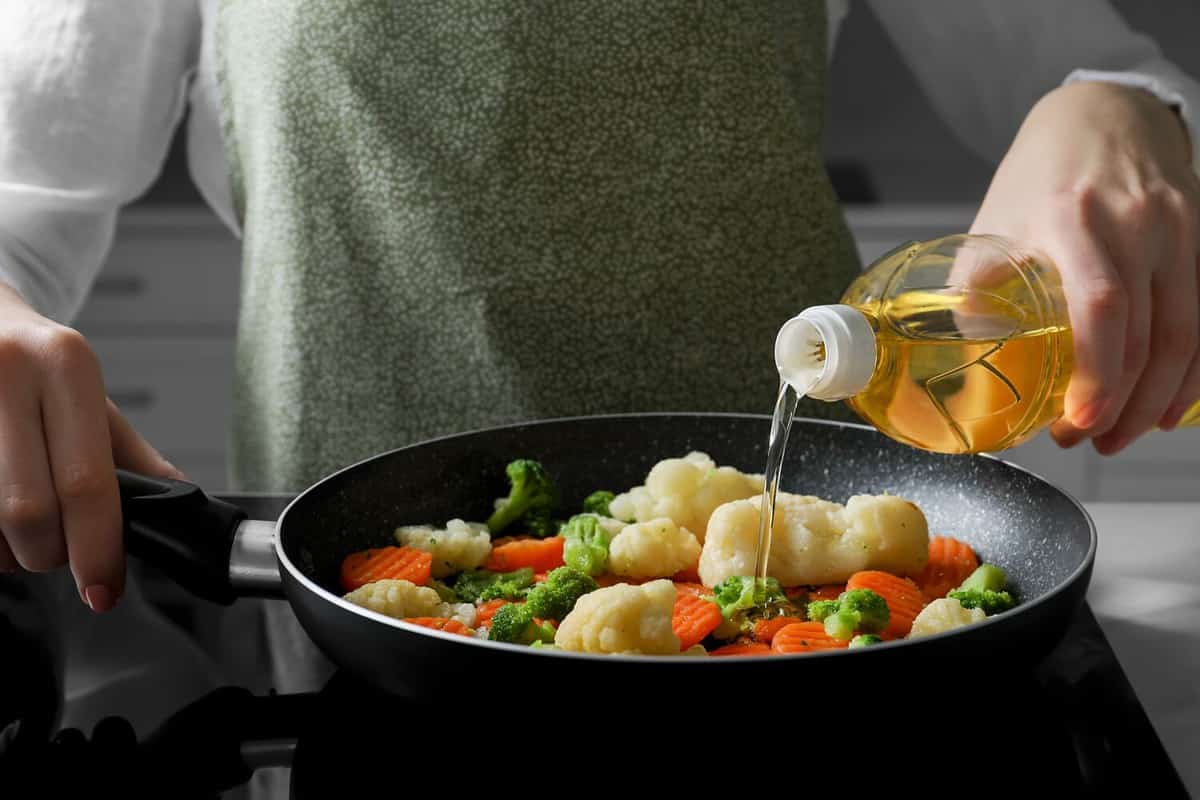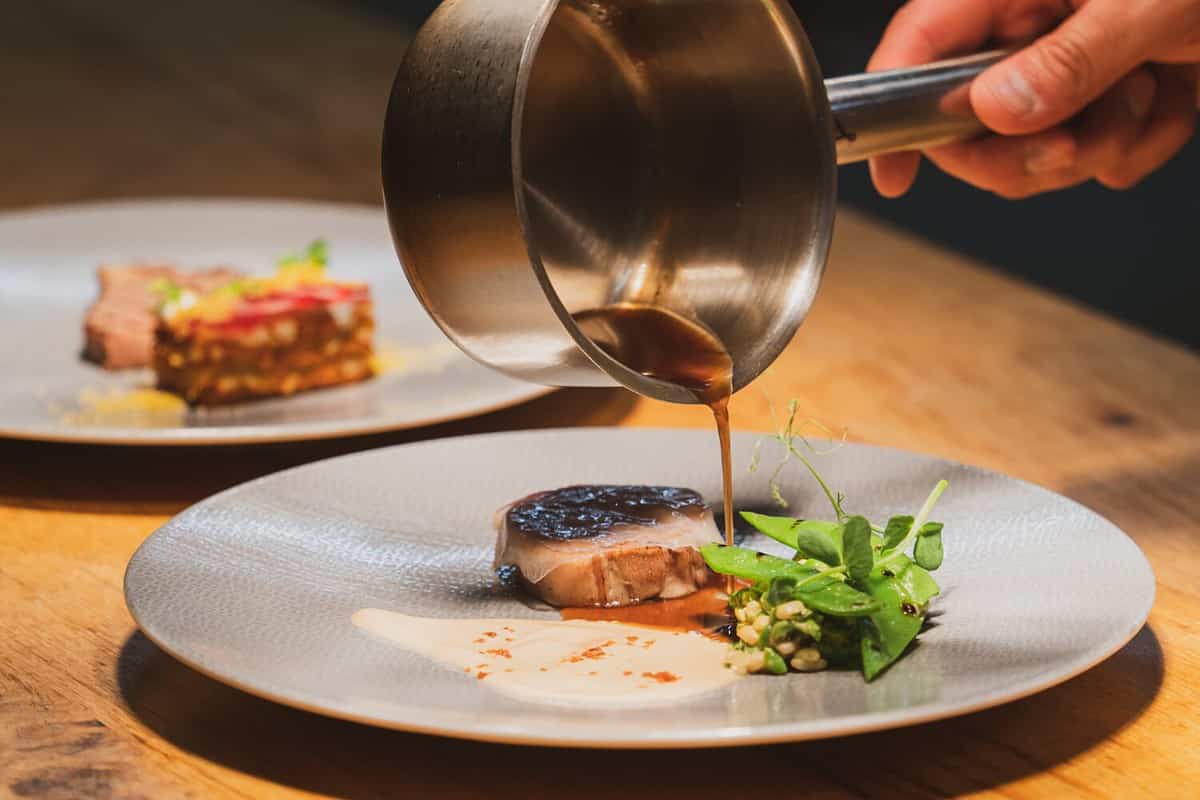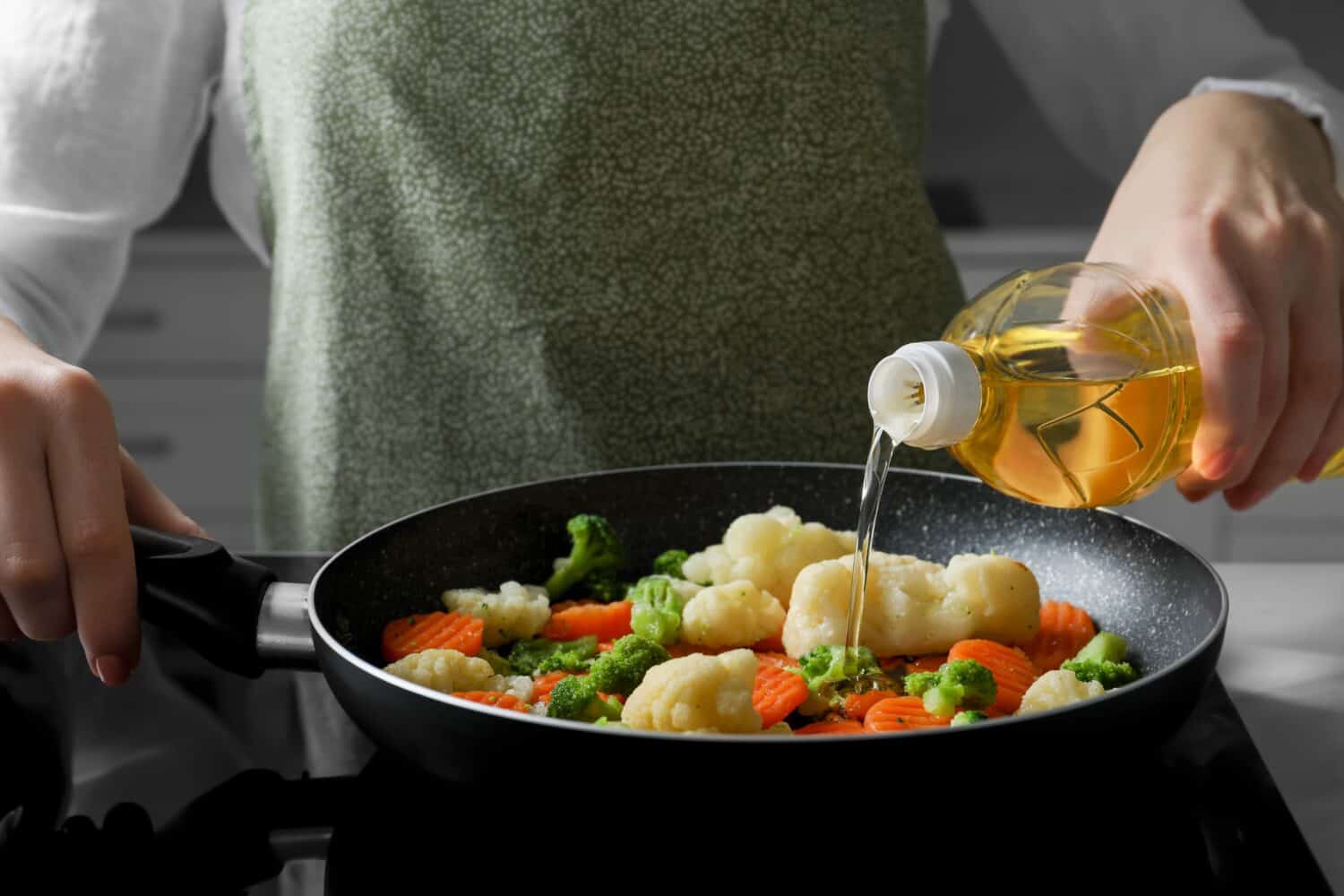Aluminum vs. nonstick: Is there a better choice for cooking? What's more budget-friendly? Knowing the difference could save you hundreds of dollars and hours of headaches, especially if you choose the wrong one for cooking food.
If you rewind to 1954, you'll learn that the first nonstick pots and pans were invented by Marc Grigoire. This eventually led to the popularity of nonstick pots and pans and how they were made of Teflon, which prevented foods from being stuck to the bottom. Aluminum came out much earlier in the 19th century. Over the years, they have become more prominent in kitchens.
This guide covers everything you need about nonstick and aluminum pots and pans. We cover the differences in how they are made, the pros and cons of each, and which is the better option in terms of affordability.
Nonstick

©New Africa/Shutterstock.com
One of the most unique things about nonstick pots and pans is that they are made with Teflon. This is needed to prevent foods from sticking to the bottom of the pan, making it different from stainless steel pots and pans.
While nonstick kitchenware's advantage is that it prevents food from sticking to the bottom of it, certain disadvantages come with it. For example, you must be careful of how hot the pan gets because it can ruin the pan or the pot if it exceeds 500 degrees. Putting the nonstick in the oven or using metal silverware to cook with the pan is also not recommended because it can scrape the Teflon off it.
Knowing how to use a nonstick pan does have its benefits, especially when you compare it to other kinds of kitchenware. For instance, it's lightweight and perfect for making eggs because it doesn't stick to the pan's surface.
Here are some of the advantages of a nonstick pot or pan:
- Food doesn't stick to the bottom of the pot or pan.
- You can find affordable options that range from $50 to $500
- Easy to clean because food doesn't stick to the bottom of the pot or pan
Here are some of the negative things of a nonstick pot or pan:
- It only lasts about five years.
- Can't exceed 500 degrees when cooking food
- You can't use metal silverware on it when you're cooking.
What Is Aluminum?
A distinct advantage of aluminum kitchenware is its strong ability to conduct heat. That means it can cook food more evenly. Another benefit is that they are relatively inexpensive compared to stainless steel or nonstick pots and pans.
For example, you can purchase an aluminum cookware set for as little as $65 or as much as $200, depending on the brand and the overall quality.
Another distinct advantage found with aluminum kitchenware is that it heats up much faster than other kitchenware. However, aluminum kitchenware doesn't offer nonstick properties compared to nonstick pots and pans, and the quality is much less inferior.
Here are some of the advantages of aluminum kitchenware when compared to nonstick.
- Evenly cooks food with heat distribution.
- Relatively cheap.
- Lightweight and easy to handle.
Here are some of the disadvantages of aluminum kitchenware when compared to nonstick.
- Quality is not as great as nonstick.
- Highly reactive to acidic food, which can affect taste.
- Can easily dent if you drop them.
Nonstick vs. Aluminum: What's Better for Your Budget?

©Zsu Badak/Shutterstock.com
If you're trying to decide between aluminum and nonstick kitchenware, you have to decide what's better for you in terms of what you like to cook the most. Beyond that, you should also look at some of the prices of each one of them.
Here are the best nonstick cookware and their prices:
- Calphalon Classic Hard Anodized Nonstick 10-Piece Cookware Set ($208 on Amazon)
- T-fal Signature Nonstick Cookware Set ($98 on Amazon)
- Circulon A1 Series with ScratchDefense Technology Nonstick Induction Cookware/Pots and Pans Set, 10 Piece ($300 on Amazon)
Here are the best Aluminum cookware and their prices:
- Tramontina Tri-Ply Clad 10-Piece Set at Amazon ($230)
- Amazon Basics Non-Stick Cookware 8-Piece Set, Pots and Pans, Black ($67)
- AHEIM Pots and Pans Set, Aluminum Nonstick Cookware Set, Fry Pans, Casserole with Lid, Sauce Pan, and Utensils, 11 Piece Cooking Set (Black) ($60)
Nonstick vs. Aluminum: What's Better for the Kitchen?
Alumium and nonstick cookware are both effective in whatever you're making, except acidic food and aluminum pots and pans. They also have drawbacks that are worth considering.
Overall, they are both great cookware that can cook most foods. It's about finding what food you enjoy making the most with either. Nonstick is perfect for eggs, fish, and other foods. Aluminum is also great for quick cooking and affordability. Either way, you'll discover that both are great cookware.
The image featured at the top of this post is ©New Africa/Shutterstock.com.
